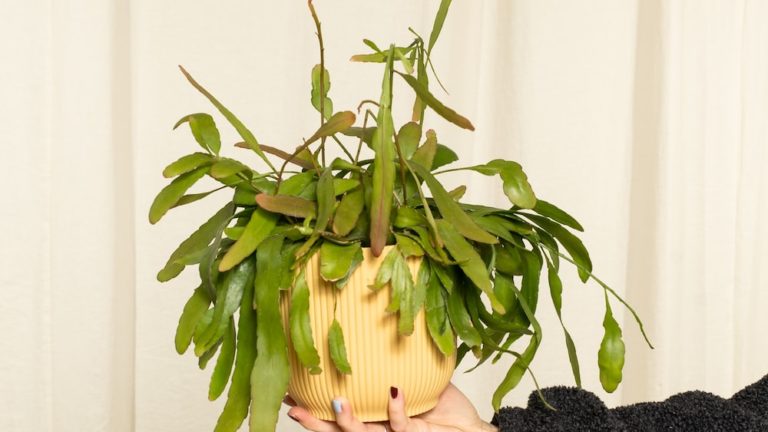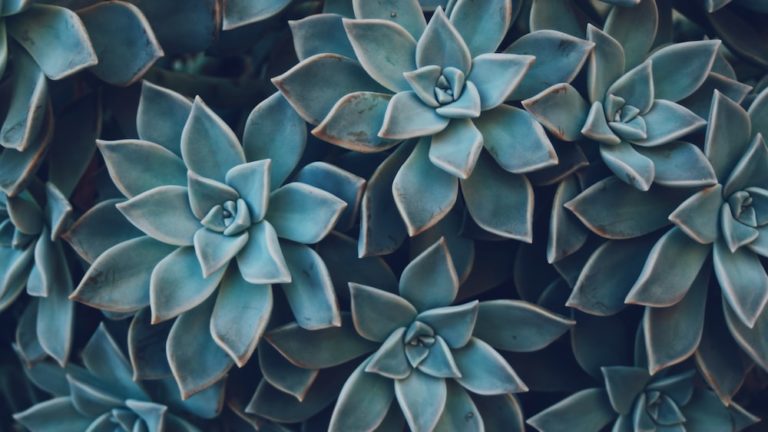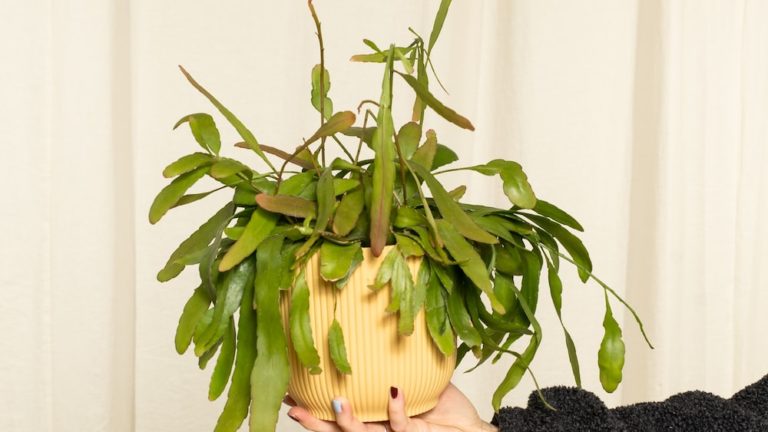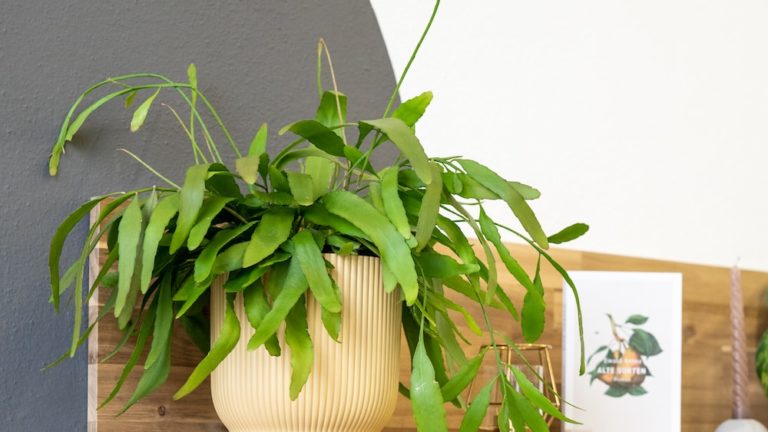Rhipsalis Pilocarpa: Discover The Endemic Brazilian Cactus
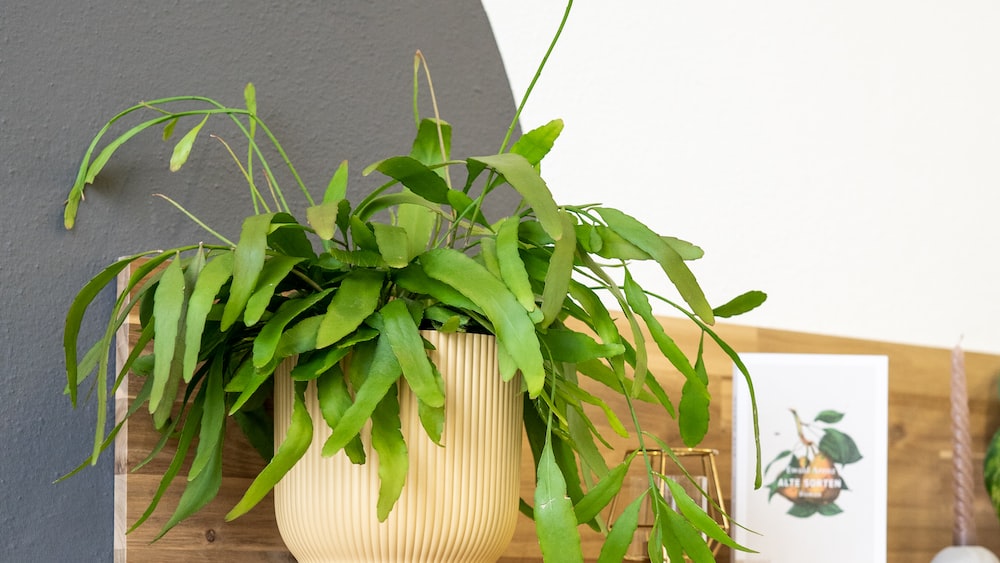
Rhipsalis Pilocarpa: Discover The Endemic Brazilian Cactus
Hello, fellow cacti lovers. Have you ever been enchanted by the dense, hanging clusters of a Rhipsalis pilocarpa? It’s a sight that once graced my garden, and the memory of its intricate beauty still lingers. Yes, friends, today we’re going to embark on a journey to unravel the unique charm and care intricacies of this Brazilian beauty.
There’s a rhythm to understanding the world of cacti, much like the garden that’s my sanctuary, and every other gardener’s. You see, loving cacti is about appreciating the resilience disguised in delicateness, nuances wrapped in thorny facades. Isn’t that like life, though, teeming with lessons and reminders? And the Rhipsalis pilocarpa, with its luxuriant stems and the subtlety of its care necessities, has been just that – a gusty teacher in a garden full of students.
As we venture into Sofia’s cacti realm, strolling through the aisles of her garden, I hope you’ll find a friend in the Rhipsalis pilocarpa, just as I did. Let’s get started, shall we?
Understanding Rhipsalis Pilocarpa
Unveiling a cactus species’ character always begins with its name, common or scientific, leading to its distinct traits. The Rhipsalis pilocarpa is no different, offering a delightful cacti tale interwoven with fascinating botanical facts.
Scientific Name and Synonyms
There’s a certain elegance to the name “Rhipsalis Pilocarpa”. The ‘Rhipsalis’ part of its name hails from the Greek term ‘rhips’, meaning ‘wickerwork’. Quite crisp to the tongue, isn’t it? The annex ‘pilocarpa’ splits into ‘pilo’, referring to the presence of hair, and ‘carpa’, denoting fruit. Thus, the name implies a species bearing hairy fruits.
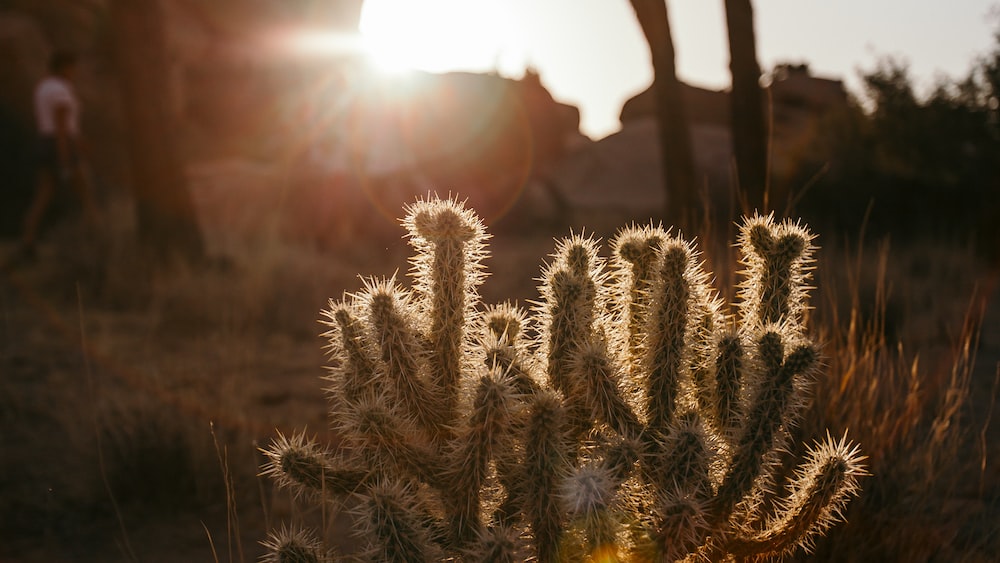
There is an absorbing conundrum here. You see, although Rhipsalis Pilocarpa is the accepted name presently, not too long ago, it was primarily known as Hariota tragacantha, under the family Cactaceae. The Rhipsalis namescape, indeed, offers a taste of the scientific palimpsest that is taxonomy.
The name Rhipsalis Pilocarpa implies a species with hairy fruits and offers a taste of the scientific palimpsest that is taxonomy.
Common Names
When it comes to common names, Rhipsalis pilocarpa wears innumerable hats. To some, it’s known as the hairy-fruited wickerware, a playful title that vividly illustrates its botanical characteristics. The locals in its endemic region affectionately call it ‘rhipsalis’, an abbreviation of its scientific title that flows easily off the tongue.
Another moniker that it proudly embraces is ‘mistletoe cactus’. This title endearingly references its drooping, segmented stems that distinctly resemble mistletoe branches. A closer look and you’d almost expect to see tiny kissing couples beneath them, just like those under the Christmas mistletoes!
Description and Characteristics
Perhaps the most succinct portrayal of Rhipsalis pilocarpa I can offer would be to imagine a lovely cascade of hanging, brush-like stems. Doesn’t the image exude a kind of serenity? These stems, categorically, are narrow, round and can reach a length of 2 meters or more!
Their surface texture is intriguingly smooth, unlike many other cacti species. And, adding to its charm are the enchanting, white to pale yellow flowers that blossom from the tips of the stems. But, it’s the visually striking, red, hairy fruits that steal the show, fascinating the onlooker with their whimsical charm.
Origin and Habitat of Rhipsalis Pilocarpa
Where does a marvel like the Rhipsalis Pillocarpa find the comfort of home? A quest into its habitat and preferred conditions reveals some delightful insights.
Native Region
In the realm of Rhipsalis pilocarpa, Brazil takes roses. Yes, this cacti species is endemic to the several forests and coastal mountains of Eastern Brazil, where it thrives amidst the lush foliage. From Rio de Janeiro to Santa Catarina, you can spot this wonder swaying gently, adding intrigue to the forests’ aesthetics.
Detecting it in the wild can be a suspenseful adventure. The Rhipsalis pilocarpa often chooses the understory and tall trees as its favorable host or dwelling spot, almost as a cloak of disguise against the untrained eye!
Preferred Natural Conditions
Transport yourself to the natural environs of a Rhipsalis pilocarpa, and you’ll find yourself amidst humid, forest areas. Perfect for someone who loves mild temperatures, wouldn’t you agree? This cactus species typically prefers cooler, shaded regions, unlike its sun-loving counterparts, as it’s content with the dim lights of the forest.
The pilocarpa finds solace in the tropical and subtropical climate of Brazil, showing preference towards locations with average humidity. Scoping through studies, I chanced upon a fascinating fact: in its natural environment, the Rhipsalis pilocarpa is an epiphyte, meaning it thrives on other plants, using them as support without depleting them off their nutrients!
The Rhipsalis pilocarpa prefers cooler, shaded regions and is content with the dim lights of the forest, making it a great choice for someone who loves mild temperatures.
Rhipsalis Pilocarpa Care Guide
Caring for a Rhipsalis pilocarpa is a waltz of balance, where nurturing takes the form of mimicking its native conditions as closely as possible.
Ideal Soil
The soil forms the bedrock of a plant’s well-being, and the Rhipsalis pilocarpa demands attention in this aspect too. To mimic its natural habitat, pick a well-draining, airy soil mix as your starting point. Your mixture should primarily include organic material and coarse sand in equal parts, emulating the forest ambience it is accustomed to.
Consider adding a dash of perlite or vermiculite as well. These will ensure aeration and water retention – two key facets of its preferred habitat. Mixing a bit of peat moss can work wonders too, as it offers a slightly acidic environment that Rhipsalis pilocarpa cherishes.
Are you worried about the perfect pH balance for this species? Stay focused on a range that’s slightly acidic to neutral – somewhere between 5.5 to 7.0 ought to do the trick! In my experimentation, I’ve found a rather interesting approach: incorporating small amounts of broken terracotta pots into the soil can help mimic its natural, rocky habitat quite accurately!
Light Requirements
In the labyrinth of my garden, the shy Rhipsalis pilocarpa has a favorite corner. Nestled amongst its peers, it basks in bright, indirect sunlight. This cactus, unlike its sun-drenched counterparts from the Cactaceae family, favors a more subdued, dappled light. Too much direct sunlight can cause the delicate surface to burn, disrupting its delicate balance.
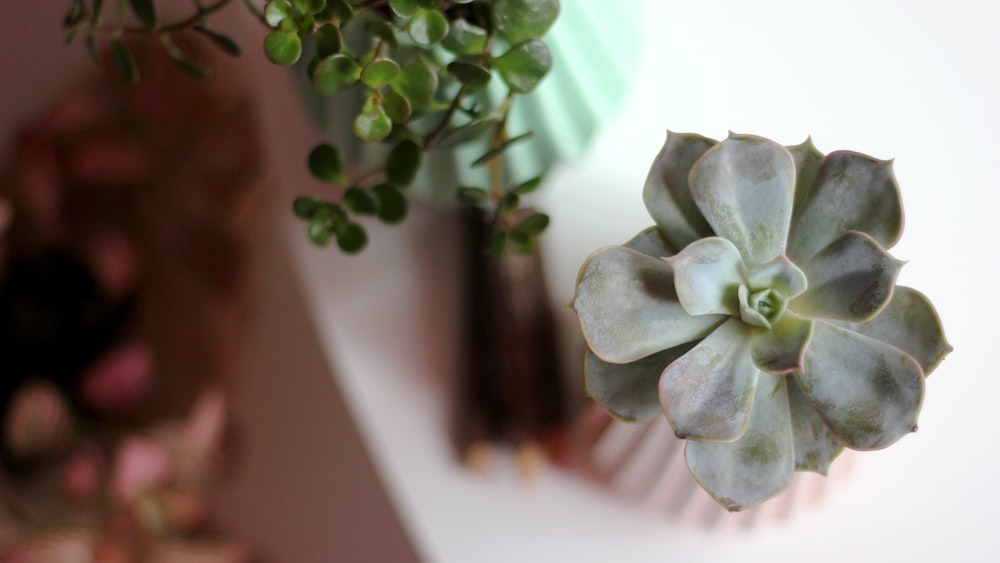
Should you wish to host this Brazilian beauty in the confines of your home, place it near a north or east-facing window. This will ensure it gets the required light without the harsh afternoon glare. Remember, getting its light requirements right is the key to appreciating this plant’s delightful aesthetics and witnessing its blooming, white flowers.
Watering Guidelines
It comes as no surprise that, like other members of its family, the Rhipsalis pilocarpa appreciates generous watering. But be warned, dear reader, while this cactus has a hearty love for water, overwatering is its nemesis.
I fondly recall an incident when, during the initial days of my botanic journey, I drenched a Rhipsalis in a deluge, only to find it wilting in the evening glow. Lesson learned: this plant, native to the high-altitude rainforests of Brazil, enjoys a good soak but only when its soil is completely dry. Its thorough watering routine should be intertwined with ample drying-out periods.
Lastly, it’s pertinent to note that your watering frequency might vary with the changing seasons. While heavy watering is needed during summers, limit it in the cooler, dormant winter months. The trick, my dear friends, is to listen to your plant. It will guide you with subtle cues – overly dry or yellow pads suggest a need for watering.
Temperature and Humidity Preferences
Life has a way of imitating nature, and the personal nuances of the Rhipsalis pilocarpa indeed make this evident. This cactus prefers a temperature range of 16°C to 24°C – a perfect reflection of the cool, elevated regions of its Brazilian home.
During the scorching summer, when even the resilient cacti of my garden start to exude discomfort, the Rhipsalis pilocarpa sways as a cool cucumber – thanks to its tolerance to higher temperatures. But, come winter, ensure protection from any frost or cold draught, as this could spell calamity.
Moreover, owing to its green canopy existence, Rhipsalis loves high humidity. Remember, it’s not your typical desert cactus craving arid conditions. Instead, to mimic the humidity of its native rainforest, a system as simple as a pebble water tray or a regular light misting will suffice.
Fertilizer Needs
Nutrition is important, even in the plant kingdom. When it comes to the Rhipsalis pilocarpa, these plants appreciate a light feeding during their active growing season. A balanced cactus or succulent fertilizer serves the purpose well.
My suggestion is to mind the concentration and frequency. Half strength or, at most, 3/4 of the suggested dose of a water-soluble fertilizer is plenty and helps prevent any accidental damage to the roots. It’s best to feed these plants once every 4-6 weeks during spring and summer.
Always ensure to water first before applying any fertilizer. This ensures that the nutrients disperse evenly and reduces the risk of root burn. Most importantly, remember to abstain from any feeding during the winter months when the plant is resting.
To keep your Rhipsalis pilocarpa healthy, feed it a balanced cactus or succulent fertilizer at half strength or 3/4 of the suggested dose once every 4-6 weeks during its active growing season, making sure to water it first and abstain from feeding during winter.
Propagation and Growth of Rhipsalis Pilocarpa
The journey of growing a Rhipsalis pilocarpa from scratch presents its own unique joys and challenges. Whether you adopt the painstakingly slow, yet fulfilling process of seed germination, or opt for the faster, foible-prone method of cuttings, each has its own reward.
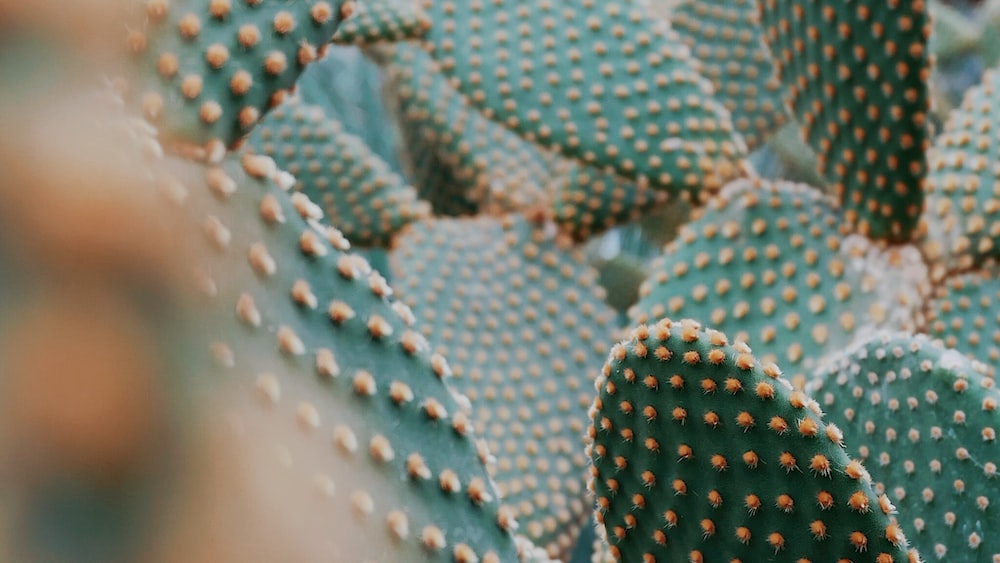
Propagation Techniques
Embarking on the propagation of the Rhipsalis pilocarpa isn’t as daunting as it may seem. Adopting the technique of growing from stem cuttings is an approach embraced by many who embark on this journey. Simply cut a healthy stem, leave it out for a couple of days to let the end dry and callous, and then place it in well-draining cactus soil.
Alternatively, for the patient souls, there is the method of germinating seeds – a decidedly lengthy yet satisfying process. Patience and care, my dear readers, are the keys here. Sow the seeds on the surface of moist, well-draining soil and provide bright, indirect light. Remember to keep the soil consistently moist as they germinate and grow.
Growth Rate and Pattern
The Rhipsalis pilocarpa, despite its exotic origins, isn’t a slowcoach when it comes to growth. With optimal conditions and care, one can witness substantial growth within a few months. The plant’s growth pattern mimics a cascading waterfall, with trailing stems that can extend over 3 feet long.
The cascading stems of this specific type flanked by small bluish-green segments and adorned with soft white bristles is a sight to behold. However, the crown jewel in the Rhipsalis family is arguably the white flowers that bloom on mature Rhipsalis pilocarpa- small, bell-shaped blooms revered for their raw, alluring charm.
Pruning and Maintenance
Pruning, a simple yet effective maintenance habit, enhances the aesthetics of the Rhipsalis pilocarpa. A well-pruned plant maintains its shape, keeping it looking fresh and attractive. Besides, pruning provides you with cuttings for further propagation.
Trimming can be done at any time of the year, although spring and summer are preferred. Use clean, sterilized scissors or pruning shears to cut the stems, ensuring to trim right above a segment joint. This promotes new growth and keeps your plant in optimum health.
Regular inspection for common pests such as mealybugs, and diseases such as root rot, is also important. A stressed or overwatered Rhipsalis pilocarpa is prone to these afflictions, so careful watering and TLC are a must!
Potting and Repotting Rhipsalis Pilocarpa
If there’s one thing I’ve learned in my years of tending to plants, it is how critical the right pot is. Much like finding the right home, choosing the right pot for your Rhipsalis pilocarpa can make all the difference.
Choosing the Right Pot
When it comes to potting a Rhipsalis pilocarpa, the ideal choice is any pot with excellent drainage capabilities. This could be a terracotta pot with a central opening or a modern plastic pot with several smaller holes around the base.
Consider the size as well. Rhipsalis pilocarpa prefer being slightly root-bound, so choose a pot just slightly larger than the root ball. The porosity of terracotta can provide a beneficial drying effect on the soil. However, rest assured, dear reader, that as patient and hardy as their plant counterparts, both pot materials will house your specimen amiably.
Repotting Process and Frequency
Let me share a little secret with you: repotting your Rhipsalis Pilocarpa is less daunting than it sounds. Start by carefully removing the cactus from its current home, and then delicately detangle the roots. A study conducted by the Royal Horticultural Society suggests that tickling the root clusters gently can stimulate new growth once rehomed. Have you ever wondered why?
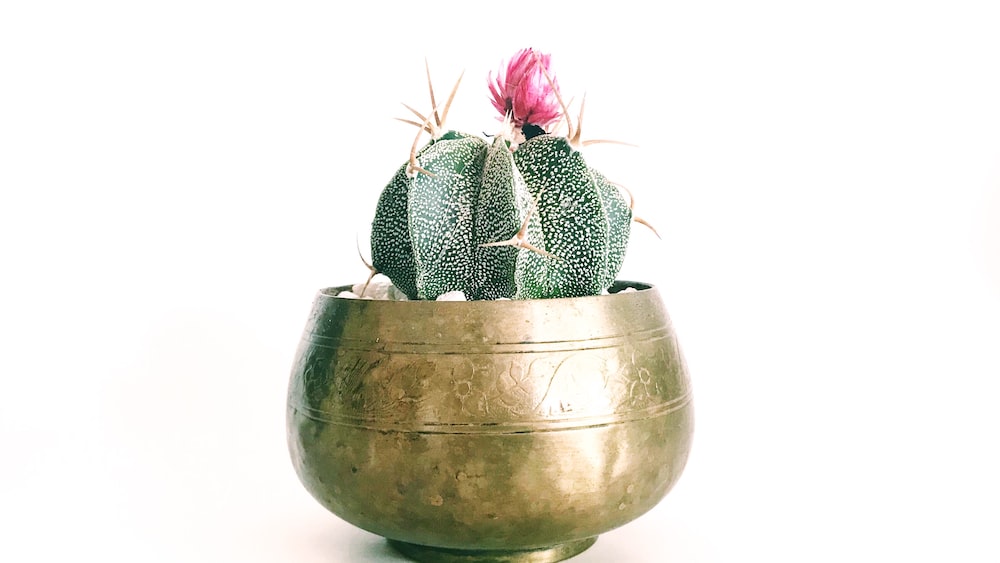
This procedure, my dear readers, mimics the sensation of tiny organisms that naturally aerate the soil in the wild, tricking the plant into believing it’s in an especially vibrant environment. Now, emulating this simple act of nature can make your beloved cactus feel right at home.
Think about this: we all love newness, and the Rhipsalis Pilocarpa is no different. I’ve found that repotting the cactus in early spring, once every two to three years, gives this stunning plant a new lease on life. This frequency seems to be the sweet spot – often enough to replenish the nutrient-rich environment but not so much that the cactus is in constant shock from moving. Always remember that, like us, our plant companions appreciate stability.
Tickling the root clusters of a Rhipsalis Pilocarpa during repotting can mimic the sensation of natural aeration in the soil, stimulating new growth and making the cactus feel at home.
Common Problems and Solutions for Rhipsalis Pilocarpa
However, nurturance invokes inevitable challenges; when nurturing your Rhipsalis Pilocarpa, some problems might just cast a little shadow on this sunshine story. But worry not, with patience and attentiveness, these can be managed effectively. Let’s get into the nitty-gritty of these obstacles and delve into the armory of solutions.
Identifying Common Pests and Diseases
Despite the robust nature of Rhipsalis Pilocarpa, it can sometimes be afflicted by unwelcome guests. Common pests such as scale insects and spider mites often find the plant’s tender green shoots irresistible. Their presence is usually indicated by small, discolored patches on the cactus or a weakening of the plant over time.
An unexpected yellowing of leaves or diminishing vigor might indicate more sinister issues. Root rot, my fellow cacti enthusiasts, is a nefarious enemy, brought on by overwatering. Look for soft, brown areas near the base of your plant as telltale signs. Beware, these issues are surreptitious, often only noticeable once the plant is already distressed.
Preventive Measures and Treatment
The best defense, they say, is a good offense. Regularly inspect your happy and healthy plant for signs of distress, paying close attention to the areas I’ve highlighted. Keep it a part of your routine, perhaps even making it an intimate ritual; then, you might just prevent these issues before they begin to gnaw at your dear cactus.
If you’re unfortunate enough to find pests or diseases, there are a plethora of remedies within your reach. Scale insects can be removed manually or with the help of organic insecticides, while spider mites can be wiped out literally by wiping the plant with a mild soap solution. For root rot, you might need to act boldly – cut off infected areas and repot the cactus in fresh, dry soil. Remember my gardening ally, Daniel. He always says, “A stitch in time saves nine.”
FAQs
1. Can Rhipsalis pilocarpa be grown from offsets?
Rhipsalis pilocarpa growth from offsets is indeed possible, and in fact it’s a common and efficient method of propagation.
2. How do I ensure proper drainage when potting Rhipsalis pilocarpa?
Proper drainage for your Rhipsalis pilocarpa can be ensured by an adequate mix of regular potting soil and a gritty amendment like coarse sand or perlite.
3. Is Rhipsalis Pilocarpa toxic?
Although deemed exotic, Rhipsalis Pilocarpa is not toxic and does not pose any threat to humans or pets.
4. Why is Rhipsalis pilocarpa also called hairy-fruited wickerware?
The name “hairy-fruited wickerware” originates from the unique texture of Rhipsalis pilocarpa’s fruit that bears a striking resemblance to woven wickerwork combined with its fuzzy appearance.
Conclusion
And with that, we’ve covered the wonderful world of Rhipsalis Pilocarpa in detail. It’s fascinating how much there is to learn about this humble cactus. By offering this guide, my hope is to empower you, dear reader, to care for your own Rhipsalis Pilocarpa, turning it not just into a happy and healthy plant, but a cherished companion.
Plant keeping, like all worthwhile endeavors, is a journey teeming with lessons, joy, and occasional heartache. But it’s the resilience we discover – in the Rhipsalis pilocarpa, in nature, and ultimately, in ourselves – that makes it a truly enriching adventure.
Here’s to numerous captivating days with your Rhipsalis pilocarpa, filled with sunlight, growth, and tender care. After all, in the end, we are all nurturers at heart, aren’t we? Farewell, fellow green thumbs. Keep discovering, keep blossoming. This has been Sophia, signing off until our next botanical adventure.

